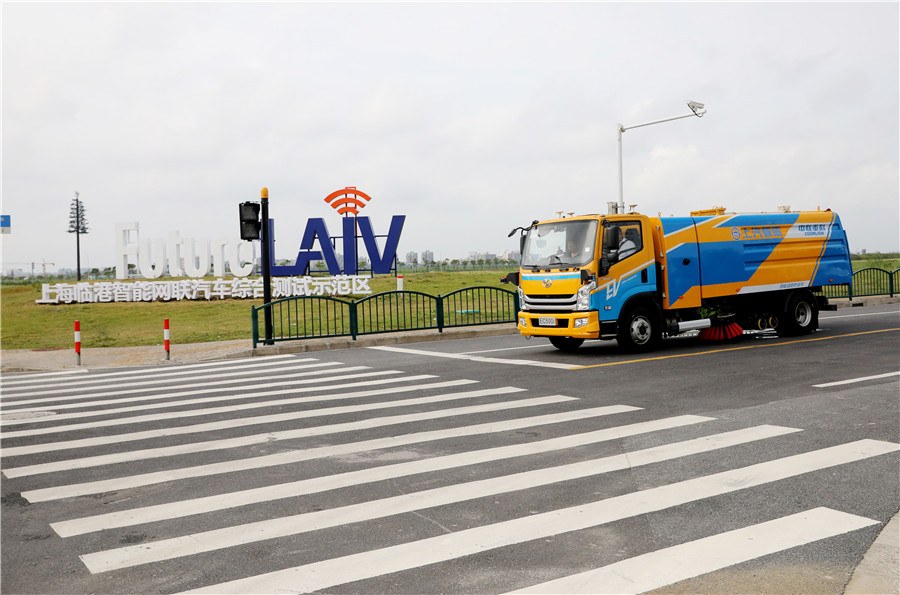Lingang takes the high road to fast growth

A self-driving street sweeper truck drives at the testing and demonstration zone in Lingang. [Photo by Fang Zhe/Xinhua]
The environment for developing connected vehicles in China is getting better and it is projected to reach a market scale of above 100 billion yuan ($13.96 billion) by 2020, said Miao Wei, minister of industry and information technology, during a recent industrial expo in Beijing.
Lingang's foundation in AI and auto manufacturing has attracted enterprises in AI and auto manufacturing related industries to leverage on the area's intelligent transportation system and autonomous driving industry.
"SAIC's intelligent trucks have done quite a few tests here for four months with further research and development also being carried out. Within the commercial vehicle scope, I see broad collaboration and development possibilities," said Zhou Chongyi, a deputy chief engineer with SAIC's commercial vehicle division.
"China is without doubt the most promising country for development of self-driving vehicles. Nullmax as an autonomous driving technology company looks to improve its solutions through local tests," said Nullmax CEO Xu Lei, adding that Lingang is one of the ideal testing destinations for the Shanghai-based company.
But Lingang's ambition is not restricted to the land, but also in the sea and in the air, according to Gu Changshi, chief planner for industrial development with the Shanghai new Lingang Area Development Administration.
"Along with the connected vehicle test and demonstration zone, a low airspace digital demonstration zone and an unmanned vessel demonstration area are also under development in Lingang, and the ultimate goal is to form a comprehensive demonstration zone for unmanned systems on land, sea and in the air," said Gu.
According to him, Lingang's special advantage of having all the transportation resources of aviation, ocean transport, railway, highways and inland waterways makes it possible to embed unmanned system into mixed transportation scenarios including ocean-road-rail transport, trucks, drones and unmanned vessels.
Lingang announced its plan for developing unmanned systems by road, air and sea in May 2018, and according to it, the area looks to create an innovative environment, a complete industrial chain as well as an ecosystem for related industries.
 Contact Us
Contact Us



